Fully Functional Miniature Weapon Models Crafted with Exceptional Quality and a Lifetime Service Guarantee
From Beretta to Walther: A Closer Look at James Bond’s Iconic Weapons in Ian Fleming’s Literary World
Diving to the Everlasting Allure of Ian Fleming’s James Bond: Guns, Glamour, and Global Influence
Since the publication of “Casino Royale” in 1953, Ian Fleming’s James Bond series has become a cornerstone of popular culture, melding espionage thrillers with a lifestyle of glamour and danger. The enigmatic 007—British secret service agent, lover, and connoisseur of fine things—has captivated audiences worldwide for over seven decades, creating a phenomenon that has stretched far beyond the confines of literature into film, fashion, and even geopolitical discourse. What began as a post-war fantasy has evolved into a complex portrayal of international relations, human psychology, and, of course, the intricate world of spying. A significant element shaping the James Bond mythos is his weaponry, most notably his pistols, which have evolved from mere tools of the trade to cultural icons in their own right. This article takes a retrospective look at the James Bond book series, exploring its seismic impact on both literature and cinematography, with particular attention paid to the role and symbolism of Bond’s firearms.
The James Bond saga commenced with “Casino Royale,” a novel introducing readers to the sophisticated but flawed spy who has a license to kill. Over the years, the series has delved into numerous geopolitical scenarios, from the Cold War anxieties in “From Russia with Love” to nuclear dread in “Thunderball” and corporate villainy in “Goldfinger.” Each book reflects its era but also transcends it, lending the series a timeless appeal.
A quintessential element of James Bond’s character is his weaponry. From the classic Walther PPK to the high-tech gadgetry of later years, Bond’s guns have played a pivotal role not only in the plots but also in defining the character’s cool, professional demeanor. The guns are not merely props; they are extensions of Bond’s own capabilities and ethics. In stories where Bond faces increasingly insurmountable odds, his firearms serve as equalizers, underscoring the life-or-death stakes of his profession. They’ve even spawned a mini-industry of replicas, video games, and collector’s items, speaking to their embedded role in the Bond mystique.
Ian Fleming’s James Bond novels have left an indelible mark on both literature and film, giving rise to a character who is both a product and a critic of the times he inhabits. As we analyze the elements that contribute to Bond’s enduring appeal, the role of his firearms cannot be overlooked. They serve as a lens through which we can explore broader themes of power, morality, and the complex landscape of international relations that have been a mainstay of the series since its inception. In understanding Bond, we come face-to-face with our own fascinations and fears, and perhaps, that is the secret to his enduring allure.
Remember a few favorite novels where guns shine on par with the main characters:
Diamonds Are Forever
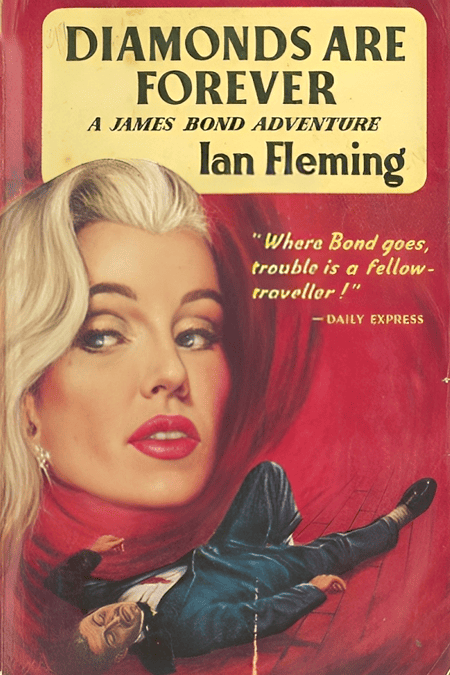
First published: March 26, 1956
Setting: Las Vegas, Nevada (United States); London, England
Characters: James Bond, Tiffany Case, Felix Leiter, M
Guns: M1911A1, Walther PPK, Smith & Wesson Model 10, M16
In Ian Fleming’s 1956 novel “Diamonds Are Forever,” the iconic British secret agent James Bond embarks on a perilous mission to dismantle a diamond smuggling operation that stretches from Africa to the United States.
The story provides a multi-faceted exploration of greed, loyalty, and the complex moralities associated with covert espionage. Bond’s firearms, primarily his Walther PPK, serve not merely as tools of survival but as extensions of his character and function as markers of the shifting landscapes of danger he navigates. In a narrative rife with betrayal and subterfuge, the reliability and precision of Bond’s weapons underscore his own relentless pursuit of justice and order.
Through various engagements with foes, from tense standoffs to violent confrontations, the gun becomes an instrumental factor in determining the outcomes of key plot points, symbolizing both the immediate, physical dangers of the spy world and the broader geopolitical stakes. As Bond wrestles with moral ambiguities and navigates volatile relationships, his firearms are a constant, a grounding element that reflects both his professional expertise and the lethal stakes of his occupation.
So, we couldn’t go past this model. Our Walther PPK is created in one of the most popular 1:3 scales. Functionality is also at the top. Movable shutter, which is fixed in the desired position by a fuse, removable dummy magazine, cocking and lowering hammer, the model shoots with 2mm cartridges of central ignition. It is decorated with wooden grips with an engraved logo – a ribbon with the Walther inscription. Just look at this pretty boy in action.
You can order this amazing miniature gun here:
In “Diamonds Are Forever,” the role of guns transcends mere functionality; they serve as narrative anchors, elucidating aspects of Bond’s personality, while underscoring the story’s broader themes of risk, morality, and the often-blurred line between right and wrong in the world of international espionage.
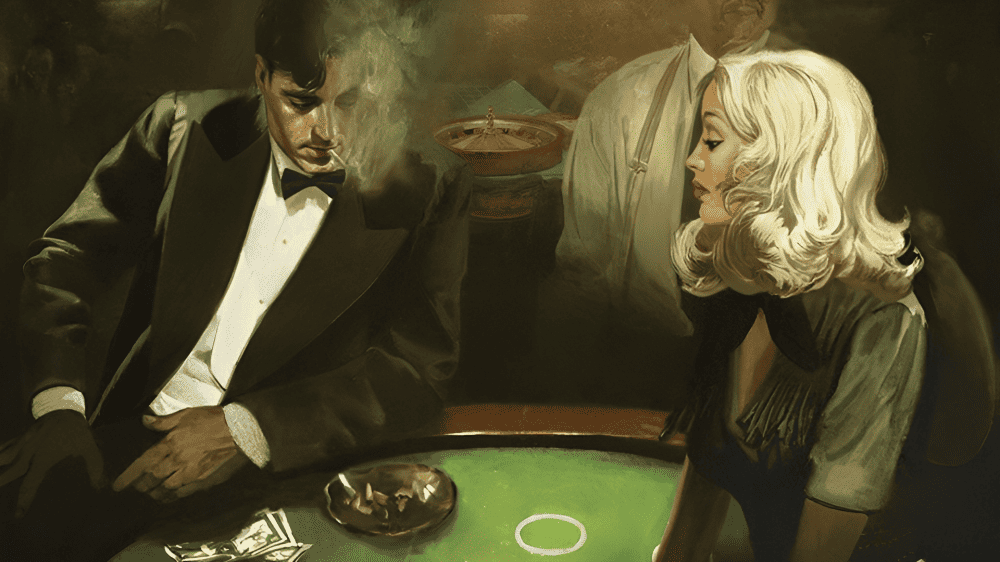
— Is it still the Beretta?
— “Yes,” said Bond, “still the Beretta.”
— “You still got that double 0 number that means you’re allowed to kill?”
— “Yes,” said Bond dryly. “I have.”
From Russia With Love
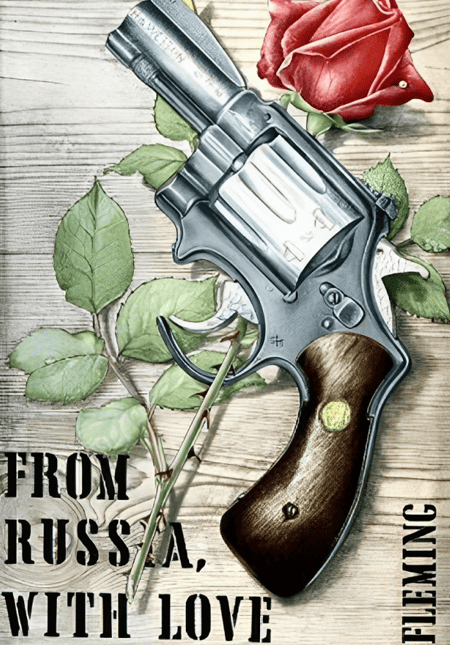
First published: January 1, 1957
Setting: Istanbul (Turkey)
Characters: James Bond
Guns: Walther PPK, Mauser C96, Walther P38, MP40
In Ian Fleming’s 1957 novel “From Russia with Love,” James Bond finds himself embroiled in a Cold War-era espionage plot orchestrated by SMERSH, the Soviet counterintelligence agency. Unlike other Bond stories where the action is immediately front-and-center, this narrative takes its time, initially focusing on the machinations of the enemy, to build suspense and tension. Bond is lured into this intricate web under the guise of a romantic liaison with Tatiana Romanova, who purports to have fallen in love with him and offers a cryptographic device as a gift to the British government.
Bond’s trusty Walther PPK is, as always, by his side, but its role is more nuanced in this installment. Here, the gun serves as a totem of his professional prowess but also as a haunting reminder of the dangers lurking behind every corner. Notably, the Walther PPK becomes the focal point in critical scenes, including encounters where hesitation or misuse could cost Bond his life. It serves to level the playing field against enemies equipped with their own deadly arsenals and complex traps.
As Bond navigates the treacherous terrains of Istanbul and the Orient Express, his weapon becomes an extension of his will to survive against an enemy who has meticulously planned for his downfall. In “From Russia with Love,” the firearm is not just an implement of action sequences but a symbol of the ever-present tension of the Cold War, epitomizing the arms race not just on a geopolitical scale but also on a deeply personal one for Bond. It underscores the delicate balance of power and vulnerability, trust and deceit, that defines the world of espionage.
Furthermore, Bond’s relationship with his weapon reflects his broader struggle: to reconcile his responsibilities as a government agent with the very human emotions and vulnerabilities he experiences. In this complex and suspense-filled narrative, Bond’s guns serve as a barometer for the shifting perils he faces, encapsulating both the physical dangers of his profession and the ethical dilemmas inherent in a life devoted to espionage.
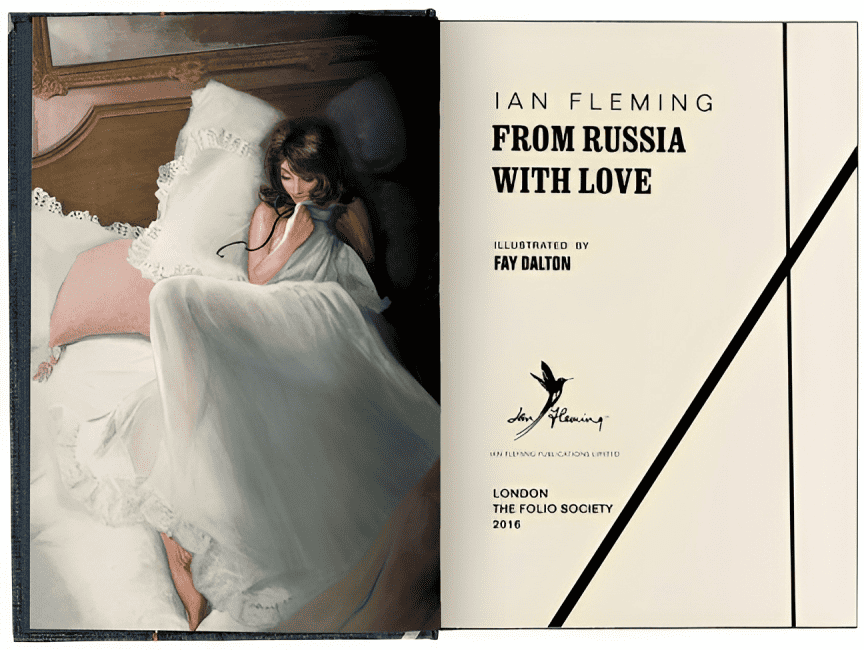
— “By the way, you got a gun, old man?“
— “Yes. Why, haven’t you?“
Nash looked apologetic. “Fraid not. Got a Luger at home, but it’s too bulky for this sort of job.“
— “Oh, well,“ said Bond reluctantly. “You’d better take mine. Come on in.“
They went in and Bond shut the door. He took out the Beretta and handed it over. “Eight shots,“ he said softly. “Semi-automatic. It’s on safe.“
Doctor No
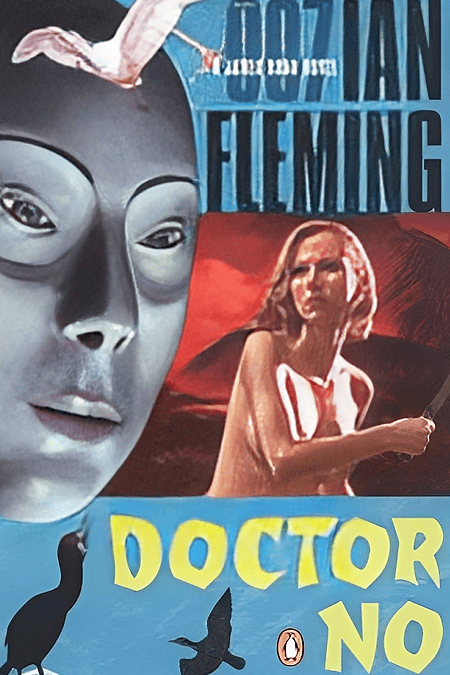
First published: January 1, 1958
Setting: Kingston (Jamaica)
Characters: James Bond, Julius No, Honeychile Rider
Guns: Walther PP, Beretta M1934, M1911A1, Browning Hi-Power
In Ian Fleming’s 1958 novel “Doctor No,” James Bond finds himself on a mission to investigate the mysterious disappearance of a British intelligence team in Jamaica. The story leads him to the nefarious Dr. Julius No, a half-Chinese, half-German mastermind with a passion for sadism and a plot that poses a threat to American missile tests. The tropical setting serves not just as an exotic backdrop but as a stage for a series of life-or-death challenges that Bond must navigate, highlighting themes of survival, individualism, and the perennial battle between good and evil.
In “Doctor No,” Bond’s firearms play a somewhat different role compared to other novels in the series. Early on, Bond is stripped of his preferred weapon, the Walther PPK, by his own service in favor of a Smith & Wesson Centennial Airweight revolver, a decision that initially frustrates him. This shift in weaponry symbolizes a change in the terrain and type of dangers he is to face. The new gun emphasizes the need for adaptability, a core theme in this particular narrative.
As Bond finds himself on Crab Key, Dr. No’s private island, his gun becomes a crucial tool for survival against both human foes and the perils of nature, from armed guards to deadly centipedes. It functions as an equalizer in a world where Bond is otherwise stripped of the sophisticated resources he typically enjoys. The gun is a basic, reliable tool in his effort to survive Dr. No’s elaborate “tests” and attempts to stop the villain’s grand scheme.
The firearm, therefore, is not just an instrument of lethality but also a symbol of Bond’s struggle against an environment designed to subjugate him. Its presence serves to emphasize the raw, elemental challenges that Bond faces, stripping espionage down to its bare essentials: cunning, resourcefulness, and the will to survive. Bond’s relationship with his weapon in “Doctor No” encapsulates the broader conflict between man and hostile environment, emphasizing the vulnerability and resilience of the lone individual in a world filled with both seen and unseen dangers.
In summary, the role of guns in “Doctor No” reflects the story’s focus on survivalism, adaptability, and the tension between technological sophistication and raw human ingenuity. Bond’s firearm serves as a linchpin that both empowers him and reminds him of his own mortality, as he faces one of his most resourceful and sadistic foes.
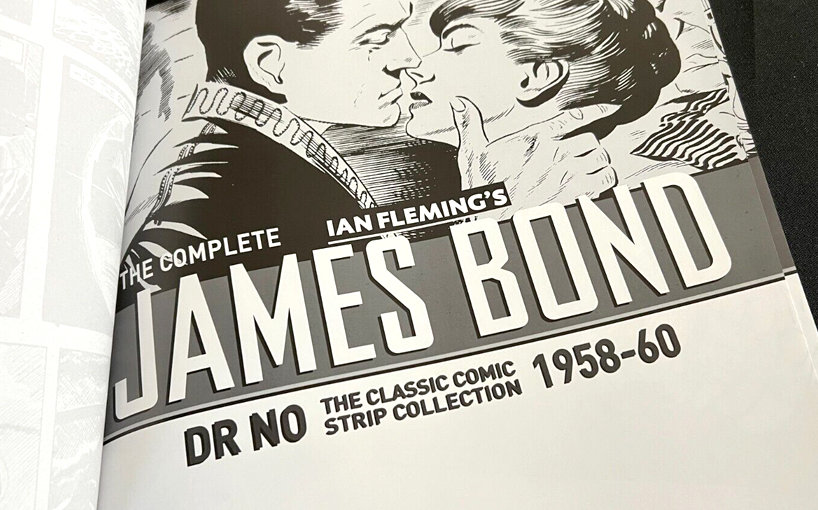
Bond climbed naked under the single cotton sheet and turned over on his left side and slipped his right hand on to the butt of the Walther PPK under the pillow. In five minutes he was asleep.
Goldfinger
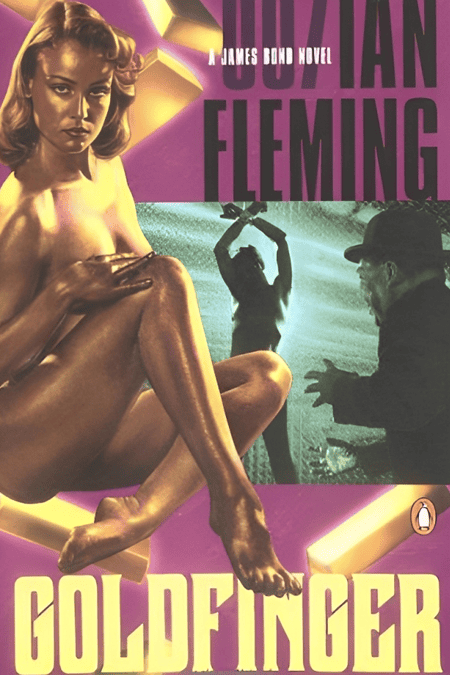
First published: March 23, 1959
Setting: Miami, Florida (United States); Kent, England; Fort Knox, Kentucky (United States)
Characters: James Bond, Auric Goldfinger, Pussy Galore, Felix Leiter
Guns: Walther PPK, Luger, Walther P38, MP40
In Ian Fleming’s 1959 novel “Goldfinger,” James Bond is pitted against Auric Goldfinger, a gold-obsessed tycoon with a plot to infiltrate Fort Knox and destabilize the global economy. Set against a backdrop of post-war economic anxieties and Cold War tensions, the story delves into themes of greed, obsession, and the abuse of power. Bond’s mission is not just to thwart Goldfinger’s scheme, but to unravel the complex network of criminality that supports it.
In this narrative, Bond’s signature Walther PPK returns to its established role as an extension of his professional competence and a symbol of his authority as a 00-agent. However, its utility is somewhat subverted in “Goldfinger,” notably during sequences where Bond finds himself disarmed or in situations where a gun would be ineffective. These moments serve to heighten the tension and challenge Bond’s reliance on technology and weaponry, pushing him to rely more on his wits, charisma, and physical abilities.
For instance, in the iconic golf match between Bond and Goldfinger, Bond’s skill and strategy take center stage, rendering his weapon irrelevant for the moment. Similarly, in the later stages of the plot involving Fort Knox, the focus shifts towards a grander scale of technology and military power, pushing personal firearms like Bond’s into the background. These scenarios underline the limitations of personal weaponry in the face of complex, large-scale problems, both tactical and ethical.
However, when Bond’s Walther PPK does come into play, it is decisive. The weapon represents the deadly seriousness of his mission and serves as an equalizer when he is outnumbered or outsized by foes. Bond’s use of the gun is always calculated, underscoring his professional skill and pointing towards the grave responsibilities and judgments a 00-agent must make. It serves as a counterpoint to Goldfinger’s grandiose machinations, highlighting the dichotomy between individual action and systemic corruption.
In summary, in “Goldfinger,” Bond’s guns function both as practical tools and as narrative devices to explore themes of personal vs. institutional power. While Bond’s weapon is an integral part of his persona and capabilities, its limited efficacy in certain scenarios also serves to elevate other aspects of his skill set, emphasizing that the man is just as critical as the tool in hand. This nuanced approach deepens the reader’s understanding of both the story’s intricate plot and its complex protagonist.
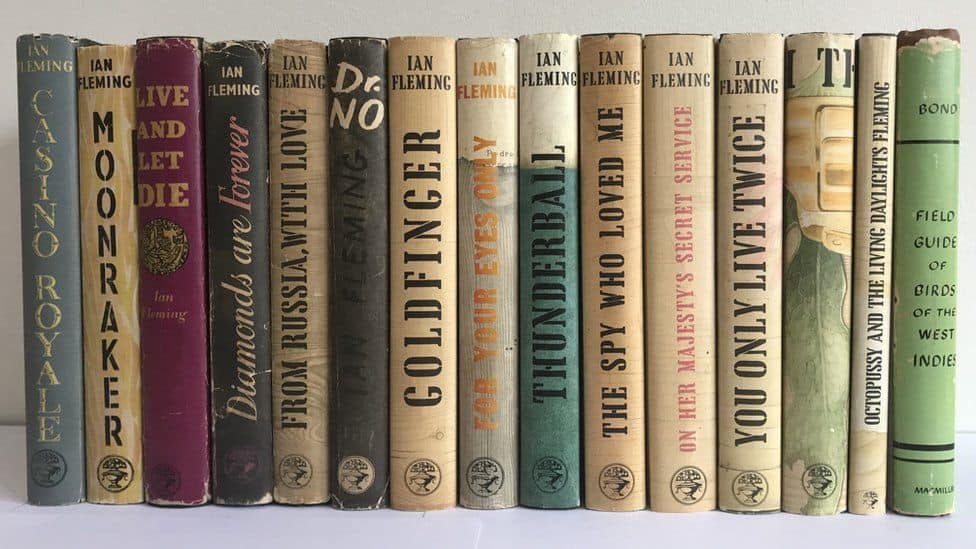
Bond went to his suitcase and took out a thick book — The Bible Designed to be Read as Literature — opened it and extracted his Walther PPK in the Berns Martin holster.
W.POLAH MINIATURE GUNS: 2mm pinfire Beretta 92FS scale ⅕ in action:
on this video, I show how to shoot this gun model
Actually, this model is so popular that we created it on several scales and with different functionality and decoration. So, to be continued… but for now, let’s get back to the books.
Thunderball
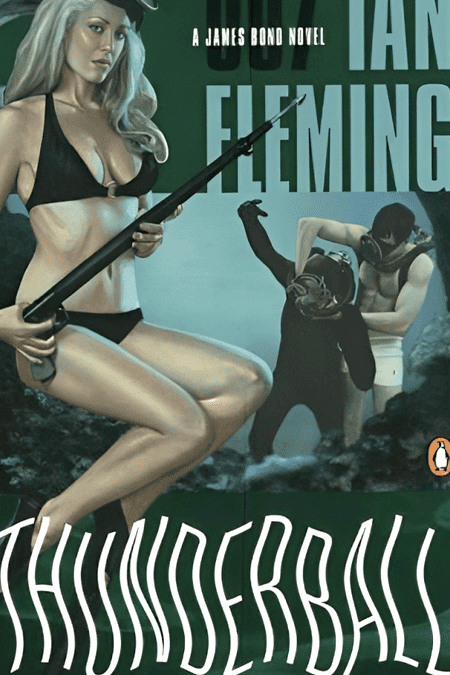
First published: January 1, 1961
Setting: London, England; Paris, France
Characters: James Bond, Ernst Stavro Blofeld, Emilio Largo, Felix Leiter, M, Miss Moneypenny
Guns: Walther PPK, Smith & Wesson Model 10, MP40
In Ian Fleming’s 1961 novel “Thunderball,” James Bond is tasked with recovering two atomic bombs stolen by SPECTRE, a criminal organization led by the enigmatic Ernst Stavro Blofeld. The story takes Bond to the Bahamas, where he confronts Emilio Largo, Blofeld’s second-in-command, in a high-stakes game that risks global catastrophe. “Thunderball” is significant not just for introducing SPECTRE but also for grappling with the overwhelming existential dread of nuclear warfare, a pervasive concern during the height of the Cold War.
Bond’s Walther PPK, his standard sidearm, is again by his side in this adventure. However, in “Thunderball,” the firearm plays a somewhat subdued role when compared to its prominence in other Bond stories. Given the magnitude of the threat—the theft of nuclear bombs—the limitations of a personal firearm in resolving such a crisis become glaringly evident. The gun serves as a constant reminder of both Bond’s individual power and the broader, more destructive capabilities at play in the world of Cold War espionage.
That said, when Bond’s gun does feature, it serves as an equalizer, a tool that allows him to navigate the immediate life-threatening situations that he encounters. Whether it’s warding off would-be assassins or engaging in combat with Largo’s henchmen, the Walther PPK remains a symbol of Bond’s expertise and the perilous nature of his profession. The weapon functions as a line of last resort, something to be relied upon when all else fails, thereby serving as a narrative device to heighten tension and stakes.
Interestingly, in “Thunderball,” we also see a shift towards other forms of combat and tools, including underwater weaponry and gadgets, reflecting the unique challenges of the mission at hand. These innovations add new dimensions to Bond’s arsenal but also emphasize the limitations of conventional firearms in the face of massively destructive technology like atomic bombs.
In summary, the role of guns in “Thunderball” is nuanced, serving both as a familiar element of Bond’s professional toolkit and a narrative device to underscore the enormity of the threats he faces. While Bond’s Walther PPK continues to symbolize his individual skill and courage, the story places it within the context of larger, more impersonal forms of destruction, thereby offering a critique of the efficacy and ethics of violence in an age overshadowed by the specter of nuclear annihilation.
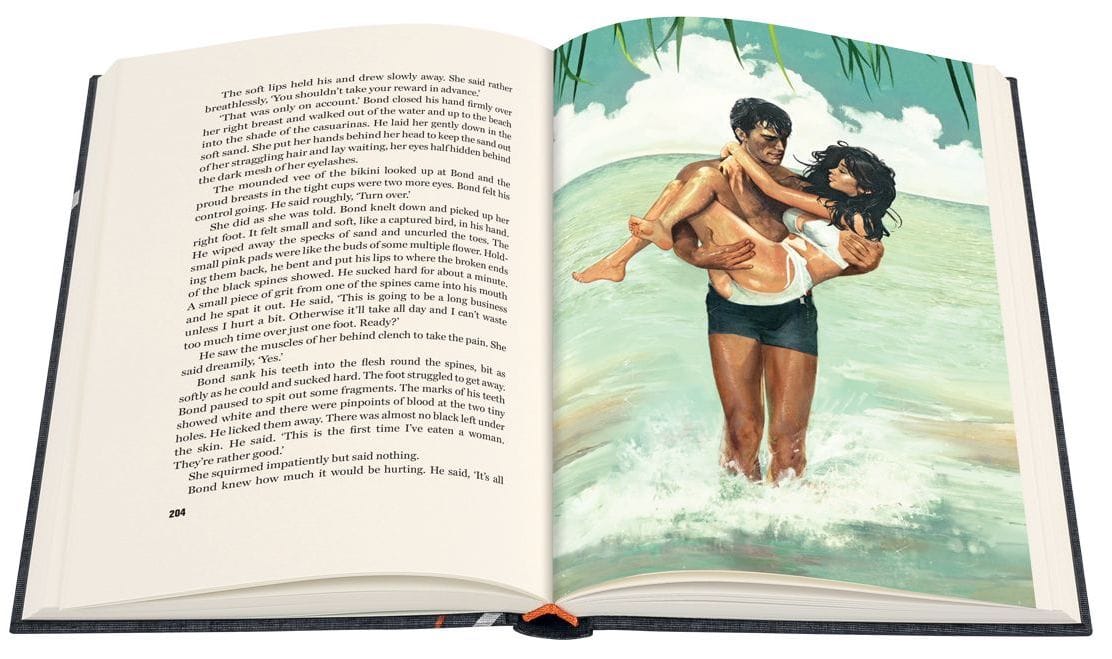
He stamped his foot into the floor and, driving with his left hand, drew out the Colt with his right. Now he was up with the Bentley’s rear bumper. Now he was alongside. The dark profile was a sitting target. With a last quick glance ahead, he raised the gun.
Now I’ll show the miniature gun Beretta 92FS already in 1:3 scale. This is our biggest Beretta. And it’s felt really heavy in the hand. The functionality is similar to Walther PPK 1:3. The caliber is also 2mm.
Like our other models, this one also comes with a beautifully crafted wooden box to store the miniature and its accompanying accessories. You will receive a complete set perfect for playing, collecting, or gifting as a memorable present.
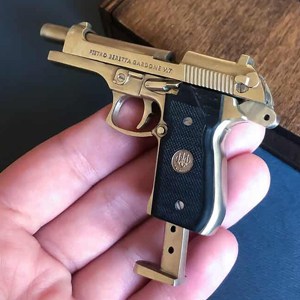
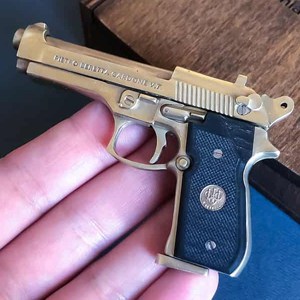
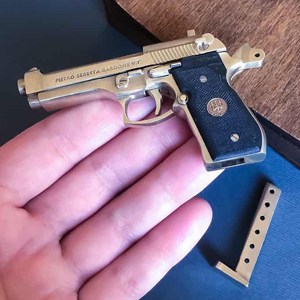
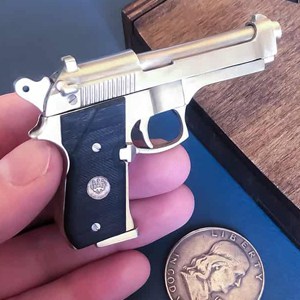
To take a detailed look and order the miniature gun Beretta 92FS right now on our website:
About the Author
My name is Olha Polah, and I have been working in miniature weapons production since 2015. I started the mini firearms brand and have been running the brand’s Instagram page since 2016. The brand’s miniatures are popular worldwide, with fans in 25+ countries. I became the sole owner of the brand in 2018 and created a comprehensive line of miniatures. More than 60 models of miniature weapons from various historical periods have been created. In November 2023, I was interviewed by Robert Dunn for the GunTech magazine, where I talked about the hardships I had to endure in my business. I also run a newsletter for the brand’s customers, which has evolved into a full-fledged magazine with in-depth articles published on the wpolah.com.

My mission is to make people’s lives more joyful by sharing interesting facts about miniature weapons and inspiring everyone to express themselves.
